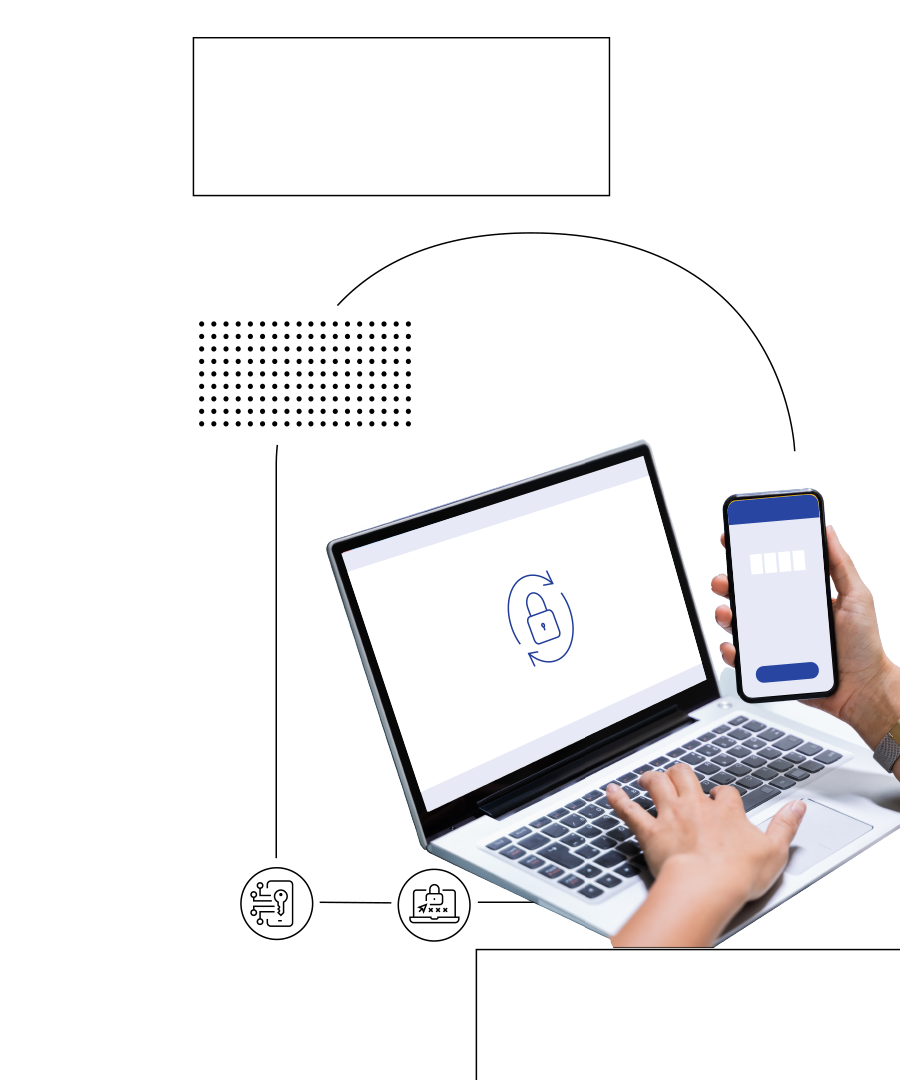
Multi-factor authentication (MFA) is a security technology that requires a user to provide two or more pieces of information or evidence to gain access to accounts or websites. Simply put, entering a password, then answering a secret question, entering a one-time PIN, an access code sent to your phone, or clicking a link in an email is multi-factor authentication.
Then there is biometric authentication, which confirms a user’s identity based on a unique physical characteristics like voice, face, finger or palm prints. This is like using your thumbprint or your face to unlock your mobile phone, scanning your palm print or retina to gain access to a secure room. This is already being used in many applications today.
Individually, these options attempt to verify your users are who they say they are but just aren’t hitting the mark. The trouble is … passwords. As a society, we’ve just outgrown them. With 80 percent of data breaches linked to passwords and 78 percent of people resetting passwords within the past 90 days because they forgot them, it’s no wonder the system is cracking. Financially, those cracks are bubbling to the surface as retailers lose millions of dollars with one-third of customers forgetting their passwords at checkout and abandoning their carts.
This is where multi-factor authentication alone faces challenges. With passwords as the first gateway to access their account, most shoppers are already up against a wall. Access to your account based on passwords is simply not secure enough. Enter Biometrics. The ability to use your face to access your phone was such a game changer. The convenience factor is bar none. But many face authentication services are still password-based requiring password logins to master accounts, default to easily hacked 4-digit PINs when face verification fails and can be dependent on a specific operating system or device.
So how do we make checkout and payments more efficient and secure when we’re faced with mounting issues? Combining biometrics in a multi-factor authorization that is not dependent on your password or device means you can finally eliminate passwords altogether, as well as fraud and the headaches associated long, inefficient checkouts for both you as a business AND for your customers.
Wink takes multi-factor authentication to the next level by using both face and voice recognition, along with device recognition to create a personalized Wink ID as unique as the user. The biometric data is private and never stored or accessible to others — it’s tokenized in the form of a 3D model of numbers and characters derived from face and voice recognition data.
Wink identifies and authenticates users through strong AI and machine learning technology, leading to heavily reduced fraud and compliance costs. Once the Wink ID is set up, no additional passwords, PINs, codes are needed. And with payment methods tokenized into the Wink account, any merchant that uses Wink can offer customers an easy, secure checkout and payment experience, handsfree and no passwords needed. Whether online shopping from a desktop, tablet or mobile phone or in-store checkout at a smartPOS or kiosk, merchants can enhance customer experience, decrease fraud, reduce cart abandonments, and provide a faster, safer checkout experience with one easy-to-integrate plug-in.
With Wink’s multi-factor biometric authentication and payment tokenization, shoppers can now experience the fastest, handsfree, truly passwordless checkout experience.
Just say, “Hello Wink.”